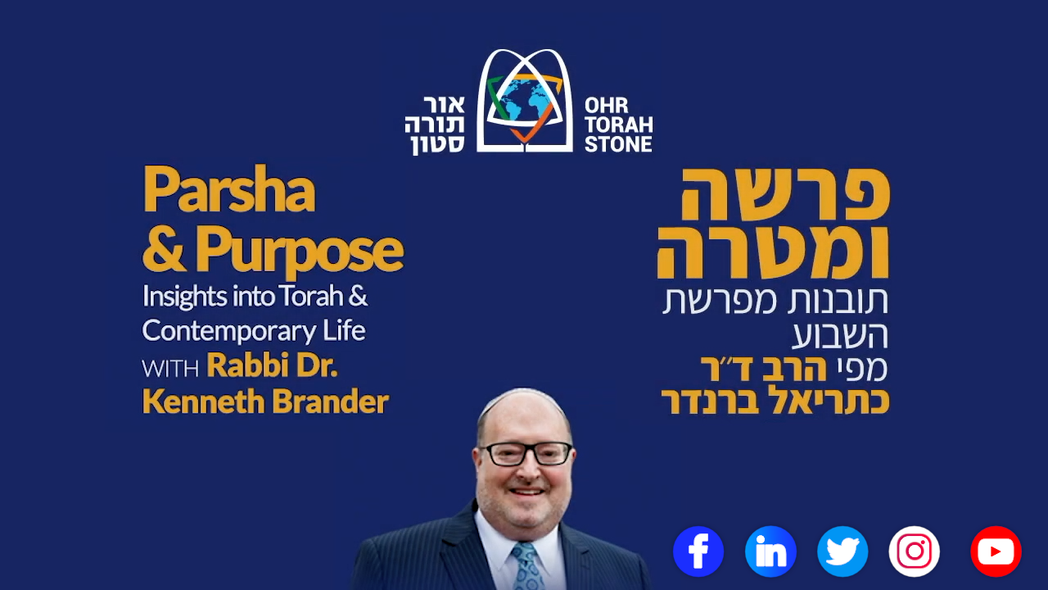CLICK HERE FOR VIDEO
Depending where you live in the world, you will read one of two parshiot this Shabbat: if you live in the Diaspora, you will read Acharei Mot. If you live in Israel, you will read Parshat Kedoshim.
Acharei Mot speaks about the formula necessary for the High Priest to enter into the Holy of Holies, to the Kodesh Kodashim. In fact, the word “Kodesh” is mentioned in the first chapter of Acharei Mot more than half a dozen times. (Leviticus, Chapter 16)
But that’s not what we entitled this section of the Torah. We simply call it “Acharei Mot”, which refers to an event that happened to Aaron’s children two weeks earlier. (Leviticus 10:1-2)
Next week’s parsha for those in the Diaspora – or this week’s parsha, for those in Israel – is called Kedoshim.
It really doesn’t mention how to enter into the inner precincts of the Temple, but it is called “Kedoshim”, because it teaches us something much more important: holiness and Judaism are not about how to enter the inner precincts of the Temple, but how you engage in the everyday. And Parshat Kedoshim focuses on how to create a rendezvous with God and how to engage with society.
And therefore the Torah waits to use that word “kodesh”, “holy” – not on the parsha that speaks about how to enter into the Holy of Holies – but on a parsha that focuses on how we are to engage with society.
This is an important message for us. It’s not that the Temple isn’t important. It’s not that it’s not a central address for us to be able to feel the presence of God.
But true holiness is found when we leave the synagogue, when we leave the Temple, and we’re able to create a relationship with God in the everyday, and we’re able to create a relationship with God in the way we engage with other members of society.
Shabbat Shalom – whichever parsha you’ll be reading – enjoy it and grow from the spiritual experience.
Depending where you live in the world, you will read one of two parshiot this Shabbat: if you live in the Diaspora, you will read Acharei Mot. If you live in Israel, you will read Parshat Kedoshim.
Acharei Mot speaks about the formula necessary for the High Priest to enter into the Holy of Holies, to the Kodesh Kodashim. In fact, the word “Kodesh” is mentioned in the first chapter of Acharei Mot more than half a dozen times. (Leviticus, Chapter 16)
But that’s not what we entitled this section of the Torah. We simply call it “Acharei Mot”, which refers to an event that happened to Aaron’s children two weeks earlier. (Leviticus 10:1-2)
Next week’s parsha for those in the Diaspora – or this week’s parsha, for those in Israel – is called Kedoshim.
It really doesn’t mention how to enter into the inner precincts of the Temple, but it is called “Kedoshim”, because it teaches us something much more important: holiness and Judaism are not about how to enter the inner precincts of the Temple, but how you engage in the everyday. And Parshat Kedoshim focuses on how to create a rendezvous with God and how to engage with society.
And therefore the Torah waits to use that word “kodesh”, “holy” – not on the parsha that speaks about how to enter into the Holy of Holies – but on a parsha that focuses on how we are to engage with society.
This is an important message for us. It’s not that the Temple isn’t important. It’s not that it’s not a central address for us to be able to feel the presence of God.
But true holiness is found when we leave the synagogue, when we leave the Temple, and we’re able to create a relationship with God in the everyday, and we’re able to create a relationship with God in the way we engage with other members of society.
Shabbat Shalom – whichever parsha you’ll be reading – enjoy it and grow from the spiritual experience.




